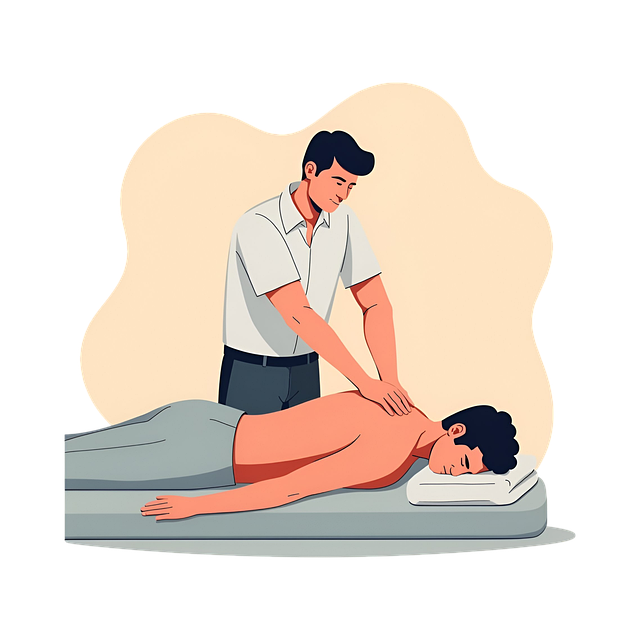Stress relief therapy through ancient practices like yoga and meditation is gaining global recognition. These holistic methods, incorporating breathing exercises, mindfulness, physical postures, and meditation, effectively combat modern stressors. Yoga, with its roots in India, combines asanas (poses), pranayama (breathing techniques), and meditation to regulate the nervous system and promote relaxation. Modern forms emphasize mindfulness, making yoga accessible for diverse individuals seeking mental health management. Meditation, especially mindfulness meditation, cultivates present-moment awareness, reduces anxiety, and improves psychological well-being. Combining yoga and meditation offers a powerful synergy for optimal stress reduction, addressing both physical and mental aspects of wellness. Incorporating these practices into daily routines fosters tranquility, resilience, and comprehensive well-being.
“Unwind and find inner peace with yoga and meditation, powerful tools for managing stress and enhancing overall well-being. In today’s fast-paced world, understanding the impact of stress on our minds and bodies is crucial. This comprehensive guide explores ancient practices with modern relevance, delving into the historical roots of yoga and its scientific backing as a stress relief therapy. From key poses and breathing techniques to meditation practices, discover holistic approaches to calm the mind and transform your daily routine.”
Understanding Stress and Its Impact on Well-being

Stress is a ubiquitous part of modern life, stemming from various sources such as work pressures, financial worries, and personal relationships. It can manifest in both physical and mental forms, affecting our overall well-being. Prolonged stress may lead to increased risk of chronic illnesses, weakened immune system, anxiety disorders, and depression. Recognizing the impact of stress on our lives is the first step towards managing it effectively.
Yoga and meditation emerge as powerful tools for stress relief therapy. These ancient practices offer a holistic approach by calming the mind, soothing the body, and promoting emotional balance. Through focused breathing exercises, mindfulness techniques, and physical postures, yoga and meditation provide a sanctuary from the demands of daily life, fostering relaxation and improving mental clarity.
Yoga: A Historical Practice for Mind-Body Connection

Yoga, an ancient practice with roots in India, has been a mind-body connection tool for thousands of years. It involves a combination of physical postures (asanas), breathing techniques (pranayama), and meditation, all designed to promote harmony between the body and mind. Historically, yoga was developed as a holistic approach to health and well-being, with an emphasis on calming the mind, cultivating strength and flexibility, and achieving inner peace. Today, it’s recognized globally as an effective stress relief therapy.
The practice of yoga encourages individuals to focus on the present moment, reducing the mental clutter often associated with stress. By combining movement with breath awareness, yoga helps regulate the nervous system, promoting relaxation and a sense of calm. Many modern forms of yoga incorporate elements of mindfulness, making it accessible as a stress relief therapy for people from all walks of life seeking to manage their mental health.
The Science Behind Yoga as a Stress Relief Therapy

Yoga, an ancient practice with roots in India, has gained immense popularity worldwide as a powerful tool for stress relief therapy. The science behind its effectiveness lies in the intricate connection between the mind and body. When we engage in yoga, various physical poses (asanas), breathing techniques (pranayama), and meditation promote a profound relaxation response. This activates the parasympathetic nervous system, responsible for calming our physiological reactions to stress.
Research has shown that regular yoga practice can reduce levels of cortisol, often referred to as the ‘stress hormone,’ and lower blood pressure, both key indicators of stress in the body. The mental benefits are equally remarkable; yoga encourages mindfulness, helping individuals become more aware of their thoughts and emotions without judgment. This increased self-awareness allows for better stress management and emotional regulation, making yoga an effective stress relief therapy accessible to people from all walks of life.
Key Poses and Breathing Techniques for Relaxation

Yoga and meditation offer powerful tools for managing stress, providing a holistic approach to relaxation and mental well-being. Key poses and breathing techniques form the backbone of this practice, allowing individuals to unwind both physically and mentally. For instance, the Child’s Pose (Balasana) is an iconic resting position that encourages a sense of calm by gently stretching the spine and relaxing the mind.
Breathing exercises, such as the 4-7-8 technique, are another essential aspect. This involves inhaling for 4 seconds, holding the breath for 7, and exhaling slowly for 8. Such rhythmic breathing helps to slow heart rate and blood pressure, promoting a state of tranquility that’s ideal for stress relief therapy. These practices, when incorporated into daily routines, can foster a sense of peace and balance, making them valuable tools in navigating life’s challenges.
Meditation Practices for Calming the Mind

Meditation practices have emerged as powerful tools within the realm of stress relief therapy. By training the mind to focus and cultivating present-moment awareness, meditation offers a sanctuary from the constant chatter and turmoil of daily life. One of the most accessible forms is mindfulness meditation, where individuals learn to observe their thoughts without judgment, allowing them to let go of stressful anxieties and worries.
Through regular practice, meditation enhances cognitive flexibility, enabling better stress management. It encourages a sense of calm and emotional balance, providing individuals with a valuable coping mechanism in navigating life’s challenges. This ancient technique has gained modern relevance, with numerous studies highlighting its effectiveness in reducing symptoms of anxiety, depression, and overall psychological well-being, making it an essential component of holistic stress relief strategies.
Combining Yoga and Meditation for Optimal Stress Reduction

Combining yoga and meditation offers a powerful synergy for optimal stress reduction. Yoga, with its emphasis on breath control, posture alignment, and mindfulness, prepares the mind and body for deeper relaxation. Meditation, through focused attention and non-judgmental awareness, calms the nervous system and quiets the mind. Together, these practices create a holistic approach to managing stress, addressing both the physical and mental components.
This integrated practice enhances the benefits of each individual technique. Yoga’s movement helps release tension stored in muscles, while meditation cultivates a sense of inner peace and equanimity. By combining these ancient practices, individuals can experience profound stress relief therapy, fostering a deeper connection with their bodies and minds.
Incorporating These Practices into Daily Life

Incorporating yoga and meditation into your daily routine can be a powerful tool for managing and reducing stress levels. These practices offer a holistic approach to well-being, addressing both the mind and body. Even short sessions can make a significant difference in one’s overall sense of calm and relaxation.
Start by setting aside just 10-15 minutes each day for yoga or meditation. There are numerous guided apps and online resources available that cater to beginners and offer simple yet effective routines. Consistency is key; regular practice will help you cultivate a deeper sense of tranquility and resilience in the face of daily stressors. Treat these activities as non-negotiable ‘me time’, allowing yourself to disconnect from outside pressures and focus on your inner peace.
Benefits Beyond Stress: Improved Mental and Physical Health

Yoga and meditation, often hailed as powerful tools for stress relief therapy, offer a wealth of benefits that extend far beyond just calming the mind. Regular practice can lead to significant improvements in both mental and physical well-being. Mentally, it helps reduce anxiety, depression, and promotes better sleep patterns, fostering a sense of calm and clarity. Studies have shown that meditation can alter brain structure, increasing grey matter in areas associated with memory, emotional regulation, and empathy.
Physically, these ancient practices enhance flexibility, strength, and balance, improving posture and reducing the risk of injury. Yoga’s emphasis on deep breathing and mindful movement can also boost cardiovascular health, lower blood pressure, and improve digestion. By combining physical postures, breath control, and meditation, yoga provides a holistic approach to wellness, nurturing both the mind and body.
Personal Stories of Success and Continued Practice

Many individuals have discovered the power of yoga and meditation as effective stress relief therapies. Personal stories abound, sharing how these ancient practices have transformed their lives. One such story is that of Sarah, who struggled with high-stress levels due to a demanding career. She began practicing yoga daily and found solace in the calmness it brought her mind. “I used to feel like I was constantly on edge,” Sarah recalls, “but meditation taught me to breathe and be present, allowing me to handle stressful situations with more clarity.”
Another success story is Mike’s journey. He turned to yoga after years of dealing with chronic anxiety. Through regular practice, he learned techniques to quiet his mind and reduce his stress response. “It’s not just about the poses for me anymore,” Mike says. “Meditation has given me a deeper sense of connection to myself, helping me stay grounded and centered even in the most challenging situations.” These personal narratives highlight how yoga and meditation can become lifelong practices, offering enduring benefits for managing stress and promoting overall well-being.
